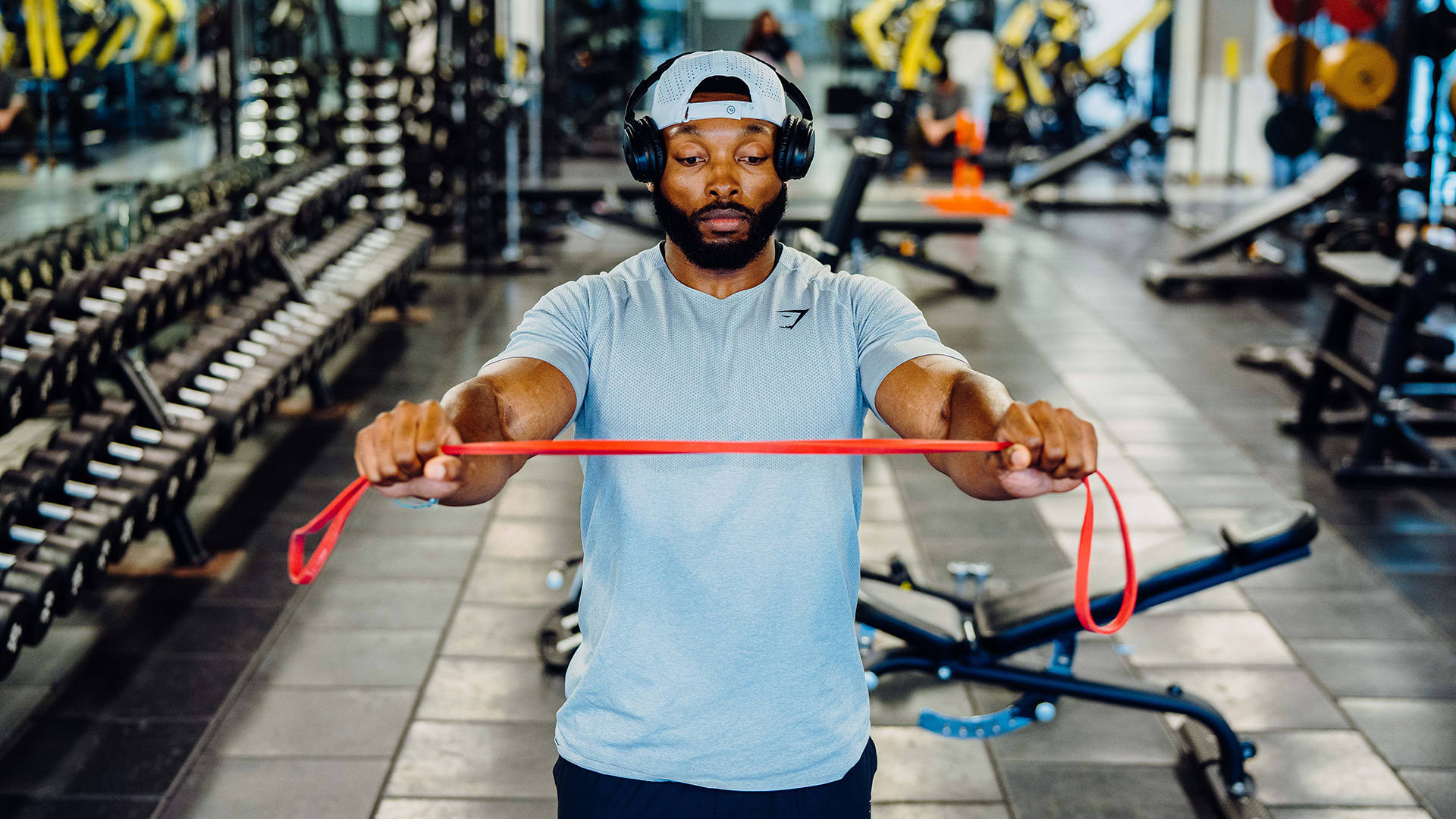

Obi Vincent knows a thing or two about packing on muscle. Aesthetics aside (erm, look at him), the popular fitness content creator has an enormous following online thanks to his ‘no fuss’ approach to keeping in shape.
Keeping things simple with good eating, plenty of rest and clean living, C4 Energy ambassador Obi’s online workouts blend the worlds of body-building and strength training with overall metabolic conditioning.
He has built a body that can handle pretty much anything you care to throw at it, from old-school strength training workouts to savage endurance events; there’s not much the man doesn’t cover. But powering it all is a muscular physique that has taken time to develop.
“Muscle gain is a fairly simple formula; you need to elicit enough stimulus through your training to trigger growth and repair of muscle tissue while supporting that growth with appropriate nutrition - dictated by calorie surplus and sufficient protein intake,” Obi says. “But it takes time and a lot of dedication. You need to be able to eat the right things at the right time and train with regularity,” he adds.
“But assuming you’ve nailed your calories and protein, then the remaining variable we can focus on is the training stimulus,” he adds.
By this, Obi means the certain tweaks to form and exercise execution that recruits maximal force and activation in the desired muscles, which can either be via a slightly different exercise set-up, through mixing up the tempo or increasing intensity.
In this article, Obi takes us through some of his top tips on how to ensure the muscles are recruited effectively, divulging a few neat tricks that he has picked up during his time in the gym.
Get all the latest news, reviews, deals and buying guides on gorgeous tech, home and active products from the T3 experts

Prepare to fail
“One of the key parts of the muscle stimulus equation is intensity. If you can combine time under tension, total volume and high intensity, you are onto a winner,” Obi says.
There have been a number of recent studies that state multiple sets of any one exercise are the best for hypertrophy, which in turn is hands-down the best prescription for overall muscle growth.
In addition to this, a further study suggests that training in a way that keeps low ‘Reps in Reserve’ (the number of reps a participant could feasibly perform at the end of the set) produced optimal results for both strength and hypertrophy.
“Add all this up and we are essentially looking at a scenario where every set of your particular exercise needs to be intense and you need to take things as close to failure as possible,” Obi says.
“I always use a C4 Original pre workout that combines two key ingredients to power my session, caffeine and beta-alanine that help drive intensity in my workouts and help me work towards sets with low reps in reserve, where I’m reaching a point of failure or very close.
“When you are trying to build muscle, you should be walking away from your workouts knowing that you’ve been through the ringer!” he adds.

Tweak your form
Exercise form is important, no matter what kind of training you are undertaking, as it actively helps reduce the chances of injury and ensures the right muscles are exacting maximum force with every lift. But the argument is more nuanced when it comes to muscle building.
Those looking to build strength, typically with lower reps but much higher levels of resistance, tend to sacrifice extremely strict form in order to physically move the mass. Those competing in ‘World’s Strongest’ competitions, for example, will do all it takes to lift, drag and throw their way to victory.
But training for hypertrophy, or physically building muscle, tends to be more focussed and a more strict approach to targeting the muscle in question is the best option for maximal growth, which is why you might see a bodybuilder perform numerous exercises just for the biceps or traps, for example. This is where small tweaks to form can help recruit the targeted muscle to a greater degree.
It would require a large book to go through all of the existing exercise form cues and ways to tweak them in order to incorporate the maximum muscle involvement, so Obi has selected a few examples of common exercises below. You can always sign up for Obi’s Ebooks and online training courses if you fancy more.
1. Barbell Squats
“A simple but very effective way to tweak your form in order to encourage muscle growth is to elevate your heel during the classic barbell back squat,” Obi says.
“You can do this by wearing squat shoes, placing a platform under your heel, or even placing a weight plate under each heel. The purpose of this is to increase your range of motion and squat depth, as well as place more emphasis on your quads.
“This technique is particularly good for those with poor ankle mobility, as the increased range of motion will allow them to recruit more muscle fibres and elicit more growth.
“If you have chosen squats in order to grow your quads, then implementing heel-elevated squats is a great way to target them more efficiently than a regular back squat,” he adds.
2. Bench Press
“One effective way to tweak your form on the bench press in order to encourage muscle growth is to incorporate a slower eccentric portion of the movement and a pause at the bottom of the rep. Lower the bar with control to your chest - this should take two seconds,” Obi says.
“Follow this with a one to two second pause at the bottom before pressing back up. This will not only increase your time under tension, which is a huge factor in hypertrophy, but also encourage you to use proper form and not bounce the bar using momentum.
“Use the pause to think about which muscles you are going to use to press the bar back up - chest, shoulders, and triceps - to improve the mind-to-muscle connection, promoting more muscle growth in those areas,” he adds.
3. Lateral Raise
“A way to improve your form on the lateral raise is to ensure that your arms are at a 35-degree angle in front of you, as this helps protect your rotator cuff and recruits more of your lateral delt and less of your traps,” Obi explains.
“A good cue is to imagine you are reaching your arms into the corner of the room. Another tip is to lead the movement with your elbows, not your hands or wrists. This will also help to place the emphasis of the movement on your lateral delts, resulting in better muscle growth in that area,” he adds.
Leon has been writing about automotive and consumer tech for longer than he cares to divulge. When he’s not testing the latest fitness wearable and action camera, he’s out in a shed fawning over his motorcycles or trying not to kill himself on a mountain bike/surfboard/other extreme thing. He's also a man who knows his tools, and he's provided much of T3's drills coverage over the years, all without injuring himself.
